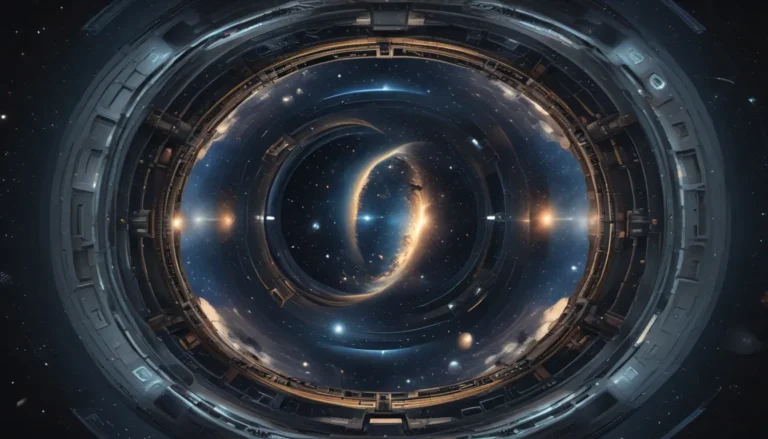The pictures we use in our articles might not show exactly what the words say. We choose these pictures to make you interested in reading more. The pictures work together with the words but don’t take their place. The words still tell you the important facts.
Space debris tracking plays a pivotal role in safeguarding our orbital environment and ensuring the safety of spacecraft and astronauts. As the issue of space debris continues to escalate, the need for meticulous monitoring and prediction of debris movements becomes increasingly imperative. Join us on a captivating journey through the cosmos as we unravel nine intriguing facts about space debris tracking, shedding light on the technologies, challenges, and future prospects in this dynamic field.
The Growing Menace of Space Debris
The realm of space debris comprises defunct satellites, spent rocket stages, and remnants of collisions, posing a formidable challenge to spacecraft operability and astronaut safety. With the escalation of satellite launches and space missions, the volume of space debris orbiting Earth has surged to alarming levels, necessitating proactive measures for effective tracking and management.
Significance of Space Debris Tracking
Space debris tracking serves as a linchpin in ensuring the security of both manned and unmanned spacecraft. By monitoring and forecasting the trajectories of space debris, scientists and engineers can preemptively avert collisions, particularly crucial for safeguarding satellites and the International Space Station (ISS), vital components of space exploration and communication infrastructure.
Pioneering Tracking Methods and Technologies
A diverse array of cutting-edge technologies is harnessed for space debris tracking, encompassing radar systems, optical telescopes, and space-based sensors. These sophisticated tools furnish precise data on the location, dimensions, and orbital characteristics of debris, enabling meticulous tracking and prediction of its movements with utmost precision.
Harmonious Collaborative Endeavors in Space Debris Tracking
Given the global nature of the space debris conundrum, international collaboration stands out as an imperative facet of effective tracking. Proactive engagement among organizations such as NASA, ESA, and various global space agencies fosters data sharing and coordinated tracking efforts, culminating in a comprehensive comprehension of the space debris landscape.
The Kessler Syndrome: A Looming Peril
The concept of the Kessler Syndrome, formulated by esteemed NASA scientist Donald J. Kessler, portends a scenario where the density of space debris reaches a critical threshold. This cataclysmic scenario envisions a cascade of collisions leading to an exponential proliferation of debris, escalating risks and complexities in space operations.
Novel Approaches to Active Debris Removal
To combat the burgeoning menace of space debris, relentless research and innovation are channeled into devising methods for active debris removal. Innovations such as capture nets, harpoons, and laser technologies are being explored to ensnare and eliminate substantial debris entities prowling in orbit, mitigating the threat they pose.
Nurturing Effective Space Traffic Management
As space ventures surge in frequency, the imperative of efficacious space traffic management assumes paramount significance. Instituting regulations and protocols to cultivate responsible conduct in space operations and curtail the genesis of new debris emerges as a pivotal strategy to sustainably navigate the evolving space environment.
Endurance of Space Debris: A Lingering Hazard
The resilience of space debris, enduring in orbit for extended periods, poses persistent risks to space missions. Even minuscule debris fragments hurtling at high velocities can inflict substantial damage upon impact. Enhanced tracking and monitoring mechanisms empower comprehensive risk assessment and strategic planning to avert potential collisions.
Envisioning a Bright Future for Space Debris Tracking
As advancements in technology burgeon, a promising vista awaits the realm of space debris tracking. From refined sensors to sophisticated artificial intelligence algorithms, the arsenal of innovations fortifies our capacity to track and prognosticate the trajectories of space debris, steering space exploration toward safer and more sustainable realms.
Embark on a riveting odyssey through the captivating domain of space debris tracking, unlocking the nuances and complexities of managing the expanding space debris milieu. By striving to comprehend the risks and innovate solutions, we forge a path forward to explore space while upholding the vitality and sustainability of our orbital realm.
FAQs: Unveiling Insights into Space Debris Tracking
-
What is space debris tracking?
Space debris tracking entails monitoring and mapping the movement and whereabouts of objects in Earth's orbit, facilitating risk assessment and protective measures for operational satellites and spacecraft. -
How do scientists track space debris?
Scientists employ an array of technologies such as radar systems and optical telescopes to trace the trajectories, velocities, and positions of space debris, ensuring comprehensive tracking and surveillance. -
Why is space debris tracking pivotal?
Space debris tracking is pivotal in averting potential collisions between operational satellites and space debris, enabling early warnings and strategy formulation to preempt disaster scenarios. -
What quantity of space debris resides in orbit currently?
The orbital realm hosts millions of entities of varying sizes encompassing defunct satellites, expended rocket stages, and vestiges of prior space missions, constituting a diverse fabric of space debris. -
Is it feasible to eliminate space debris from orbit?
Ongoing endeavors focus on developing technologies and methodologies for actively expunging space debris from orbit. Concepts such as debris capture missions and de-orbiting approaches hold promise in addressing the escalating space debris quandary. -
What perils does space debris pose?
Space debris poses substantial hazards as it can imperil or decimate operational satellites and spacecraft. Collisions with debris can engender a chain reaction known as the "Kessler Syndrome," accentuating the complexities and hazards of space operations. -
How can space debris tracking bolster future space expeditions?
Space debris tracking plays a pivotal role in formulating trajectories for future space missions. By adeptly mapping the movements and positions of space debris, scientists and engineers can design trajectories to mitigate collision risks and ensure mission safety. -
Who assumes responsibility for space debris tracking?
Space debris tracking entails collaborative engagements among space agencies, global organizations, and private enterprises. Established entities like NASA, ESA, and international surveillance networks collaborate to track and monitor space debris. -
What forthcoming challenges are envisaged in space debris tracking?
Future challenges in space debris tracking revolve around enhancing tracking precision, advancing debris removal technologies, and formulating international policies and regulations to contain the proliferation of space debris.
Unveiling the Enigma of Space Debris Tracking
Space debris tracking evokes intrigue and fascination worldwide, spotlighting the innovative technologies deployed to surveil objects orbiting Earth. The instrumental role of space debris tracking radar in detecting even diminutive fragments underscores its pivotal significance in upholding satellite safety and astronaut well-being. Immerse yourself in this enthralling realm by unfolding more captivating facts awaiting discovery.
A page to Spark Curiosity
Our unwavering commitment to delivering engrossing and authentic content powers our dedication to enriching your knowledge journey. Each fact on our platform stems from real users, offering a kaleidoscope of diverse insights and information. With our avid editors meticulously reviewing each submission, rest assured that the facts we unveil are not just captivating but also credible. Entrust in our pursuit of excellence and authenticity as you embark on an enriching voyage of exploration and learning with us.




